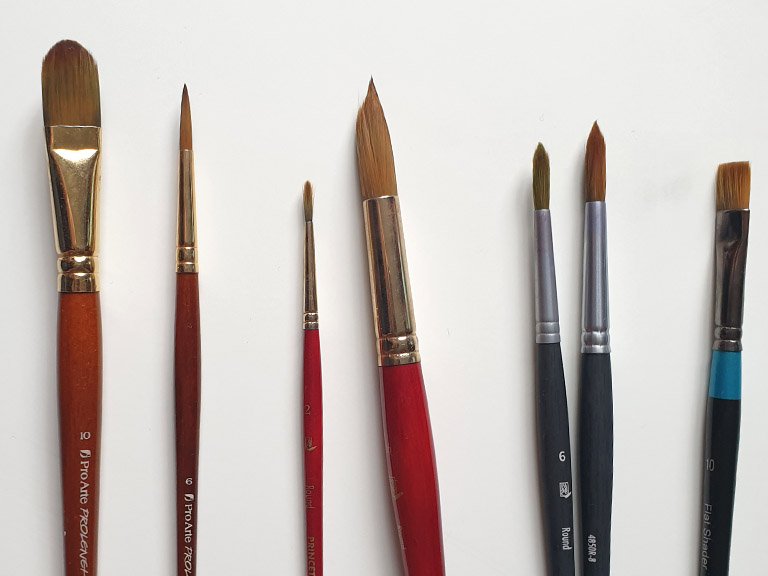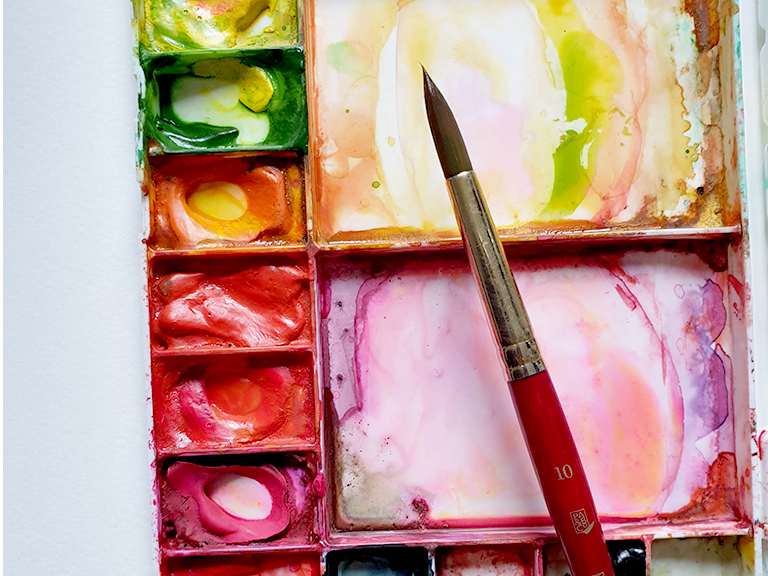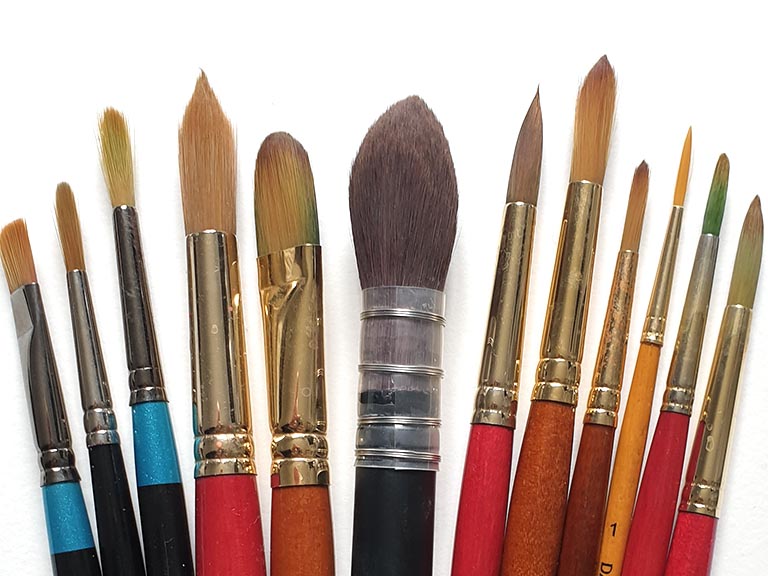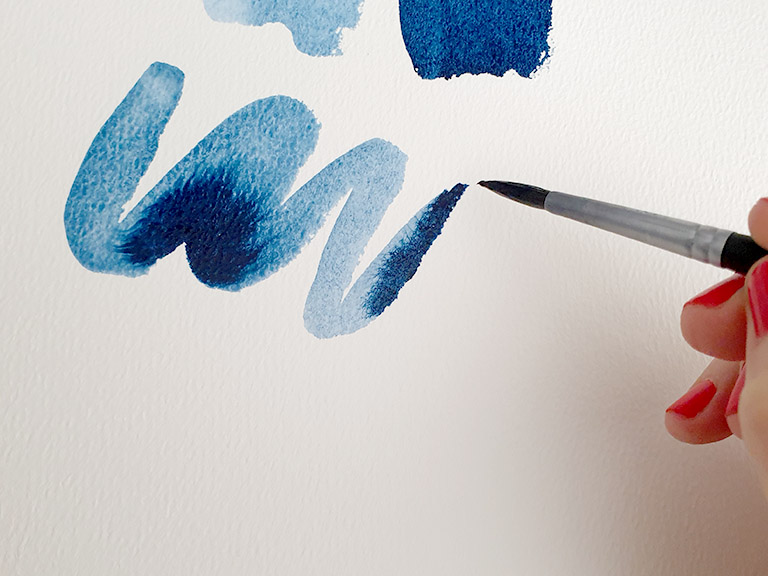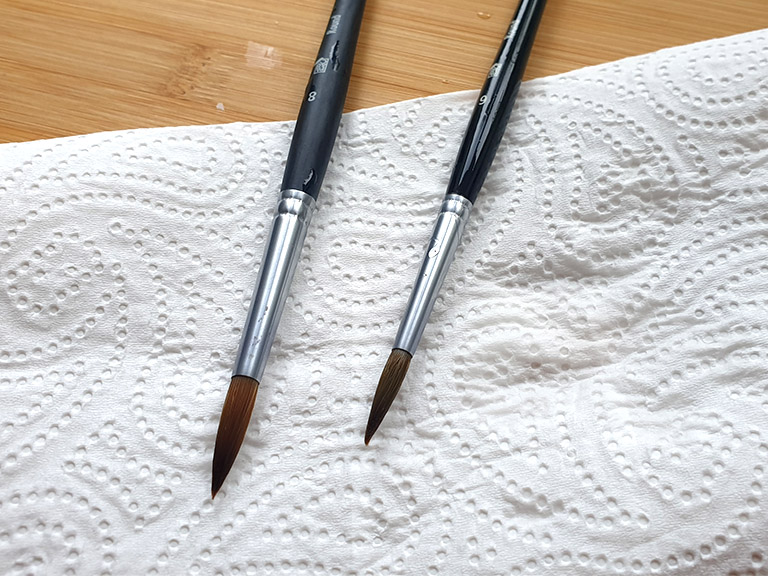Watercolour brushes are one of the key art supplies you need to start painting watercolours. Many beginners buy lots of different watercolour brushes, picking up huge sets with dozens of different types and sizes. But in truth most people don’t use many of the brushes in large sets and most of them go to waste.
You only need a few watercolour brushes to get painting, but with so many to choose from, how do you make sure you find the right brushes without wasting time and money?
This guide will tell you everything you need to know about watercolour brushes, from hair type, size and shape, so you can choose the right ones for you.
Disclaimer: I’ve been a watercolour artist for many years and all of these recommendations are my own reviews. I don’t accept payment or gifts from brands and don’t earn commission. I and have paid for these with my own money and only recommend brands and products I use and love within my own work.
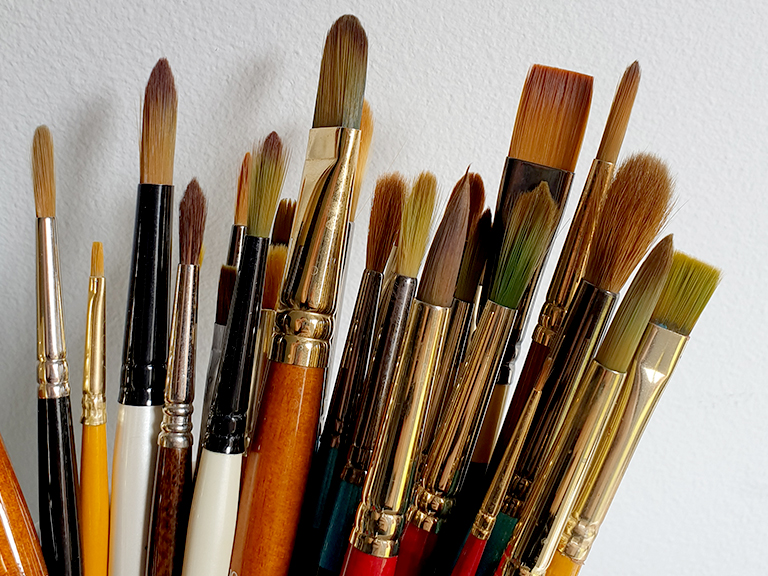
Is there a difference between watercolour brushes and oil/acrylic brushes?
Yes, absolutely. Oil and acrylic brushes have thick, tough bristles to move the thick paint. But watercolour paint is light and delicate, not suited to these harsh bristles. Watercolour brushes have soft bristles that can be easily moved around the page. They are also designed to hold plenty of water so they don’t dry out midway through a stroke.
Trying to use oil and acrylic brushes to paint with watercolour will not give you good results. Some brands and manufacturers say their brushes are suitable for both acrylic and watercolour, but they just won’t work the same as proper watercolour brushes – don’t waste your money on them.
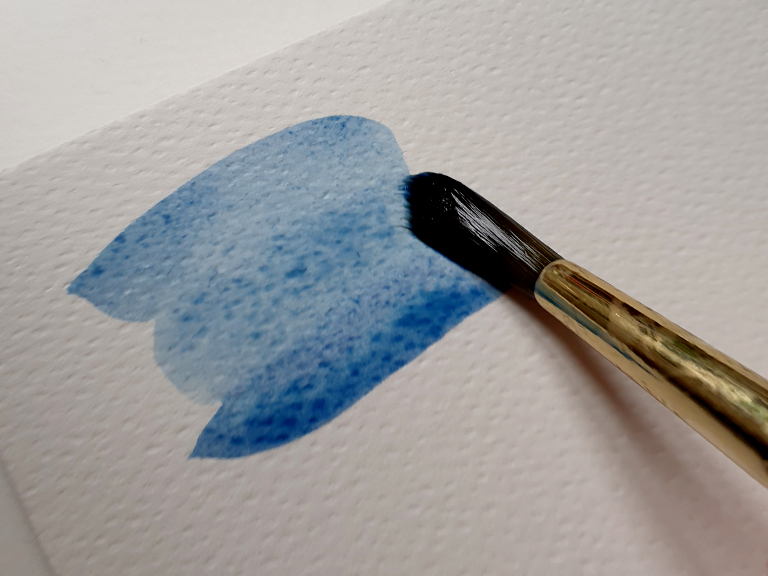
Why are watercolour brushes so expensive?
Watercolour brushes can seem expensive simply because they’re specialist. They have specific requirements – the brush must hold water well, and be soft and delicate but still hardy enough to withstand regular use.
But if you see very expensive watercolour brushes, it’s because they are made with animal hair. If you want a more affordable watercolour paintbrush, or simply one that’s cruelty-free, look for synthetic bristles.
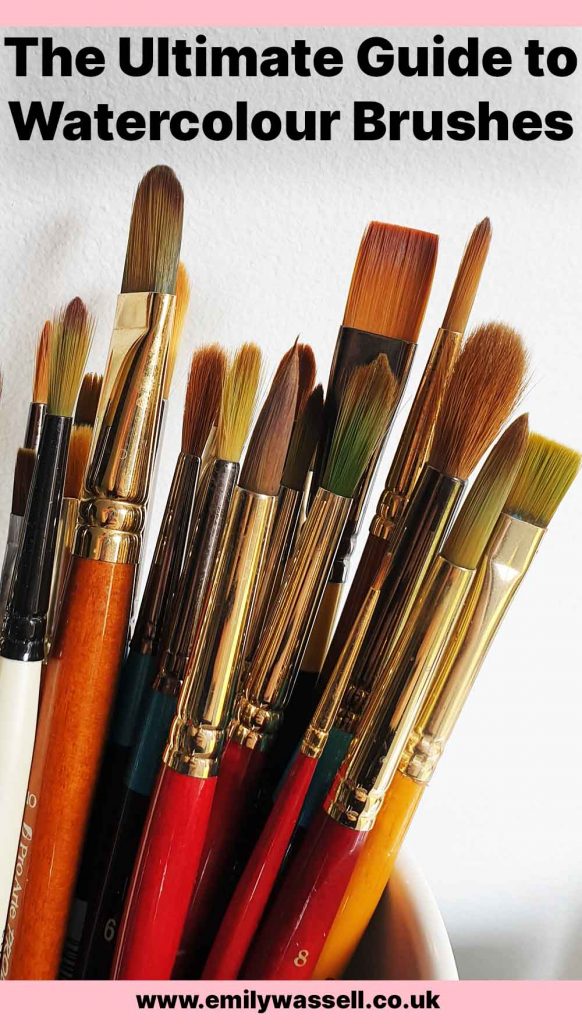
Watercolour brush hair: Synthetic vs animal hair
Watercolour brushes can have bristles made with animal hair, or synthetic versions that mimic the animal hair.
Real hair brushes are more expensive than synthetic ones. The natural hairs have little scales on them which hold more water, and they are also very soft and delicate.
Many watercolour brushes are made with sable hairs, which are long, smooth and usually taken from the tail. The most premium type is Kolinksy sable, which is actually taken from a type of weasel rather than a sable, and can cost hundreds of pounds for a single brush! There are other common hair types, from squirrel for large mop brushes to goat and ox for cheaper natural hairs.
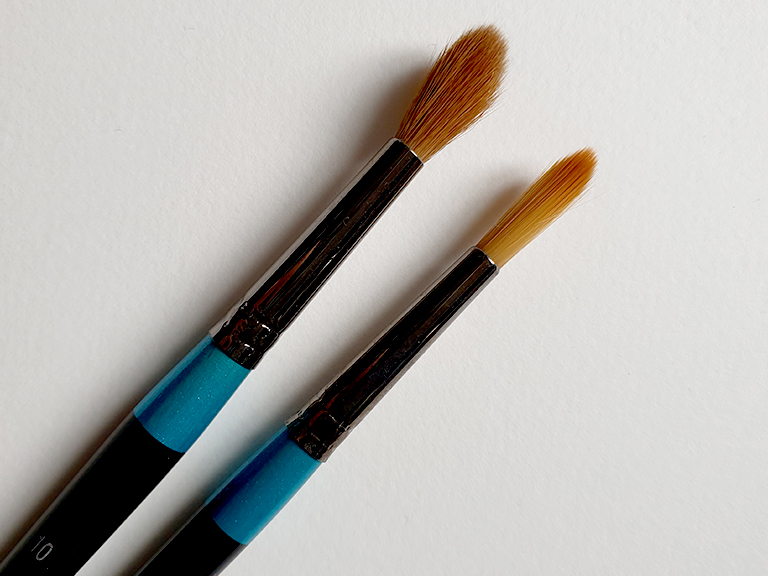
Synthetic watercolour brushes are designed to mimic the real ones but using synthetic fibres. The most common type of synthetic hair is called Taklon, and is usually ‘gold’ to mimic the sable hair, though it can be brown or white too. In truth, modern synthetic brushes paint and perform in a very similar way to animal hair brushes – the quality is almost the same.
Synthetic watercolour brushes tend to be a little firmer than real ones and hold their shape better, making them easier to control. This is sometimes referred to as having a good ‘snap’, meaning the fibres snap back to a straight position after you lift them off the page.
Some brands create mixed brushes that use both natural and synthetic fibres to get the benefits of both at a more affordable price.
Be aware that some brands also have a natural and synthetic version of the same brush, so it’s worth checking you’re getting the right one, especially if you’re ordering online!
Watercolour brush shapes
There are dozens of different watercolour brush shapes and types. Here are some of the most common:
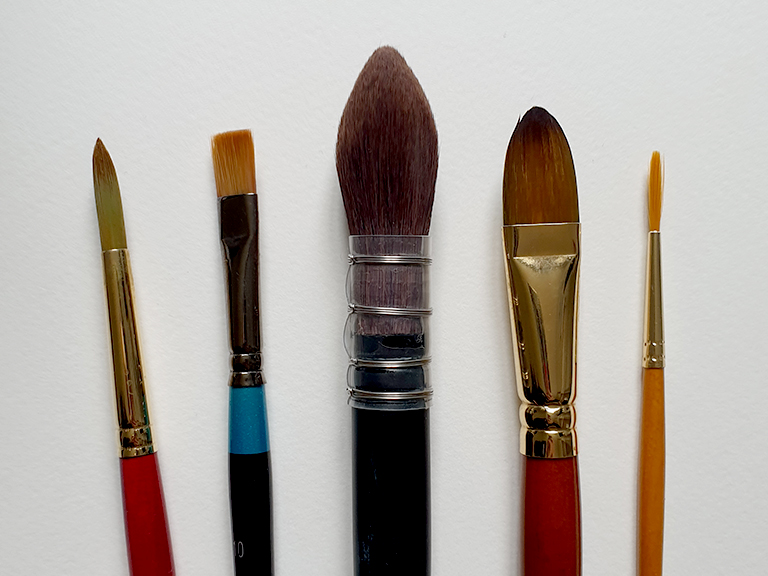
Round brushes
The most common brushes for watercolour are round brushes. These are named after the round ferrule. They work as two-in-one brushes, because they have a pointy tip that can be used to create fine strokes, and a wider belly where they are pressed down on the watercolour paper, which creates thicker strokes.
Flat brushes
Flat watercolour brushes have a flat ferrule and usually short, squared bristles. They are great for lines, edges and geometric shapes, as well as watercolour washes. A large flat brush can cover the paper quickly, ensuring equal water content that’s great for blending.
Mop brushes
These are large round watercolour paintbrushes that hold more water. You’ll recognise these from the plastic ferrule. They’re good for painting with a lot of water and loose work, but bear in mind they are most commonly made of animal hair like squirrel.
Cat’s tongue brushes
These watercolour brushes have rounded edges can be used flat or on their sides to make interesting marks.
Liner brushes
These have long bristles that are good for creating smooth long lines.
Read my guide to watercolour brush types for more sizes and shapes.
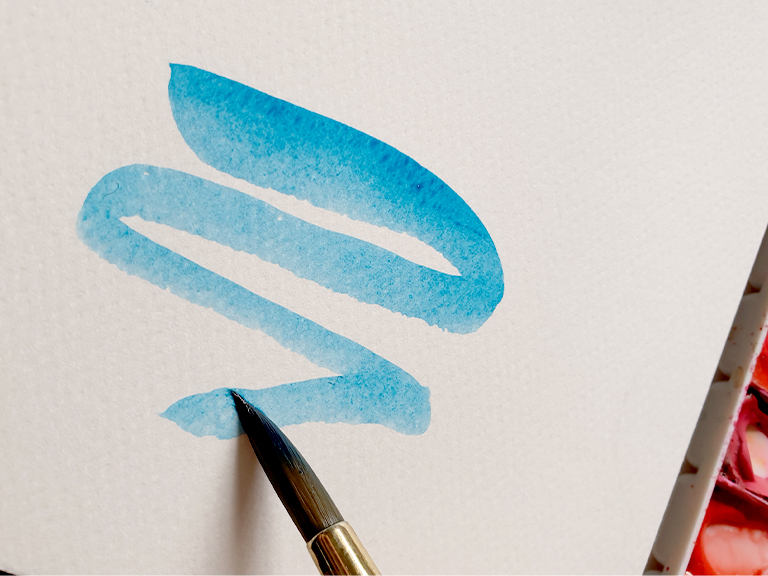
Watercolour brush sizes
The final part of the puzzle is to choose the size. Brush sizes are numbered, and the bigger the number, the wider the brush. Most often, sizes go up from 0 to 10, and then increase in intervals of twos or more, all the way to 24 or even larger. Bear in mind that sizes can differ between brands too.
Note that very small brushes are numbered in fractions. For example, a 5/0 brush has a very small ferrule and very short bristles. I know from experience how easy it is to get mixed up when you’re buying brushes online!
What size brushes are best for watercolour painting?
Many watercolourists use a size 6 round brush, which is a good medium size. You can use a smaller round size like 2 or 1 for details, and a bigger size 12 or 16 round brush for larger, looser work and watercolour washes.
If you want a mop brush, be aware that mop brush sizes are different to regular round brushes – a size 6 mop will be very large. You would be better to start with a size 2 mop for something medium.
These three sizes are usually enough for watercolour beginners to get started, but you’ll soon see what you use more of as you start watercolour painting.
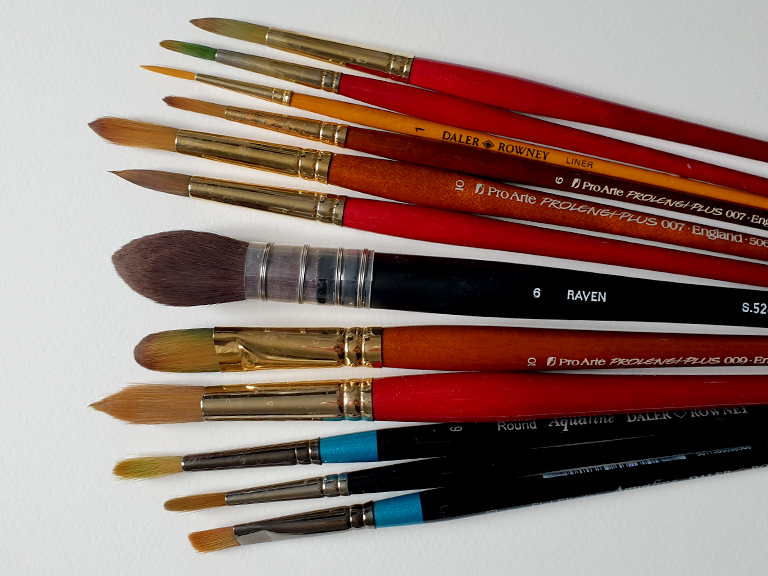
What are the best watercolour brushes?
Caveat alert! Finding the best watercolour brush largely depends on your preferences. Art supplies are very personal, and you may hate something that other people love.
With that being said, here are my top tips for finding the best watercolour brush for you. Try synthetic brushes first – many beginners find them easier to control. I also strongly recommend having at least one round brush, because it’s so versatile. It can create nice thick strokes or fine thin ones, so it’s like having two brushes in one.
Look for round brushes that have a nice pointy tip. And make sure all the hairs are pointing in the same direction – cheap brushes have hairs that aim in all different directions. Once a bristle is damaged, it’s harder to fix it.
Best watercolour brush brands
It depends on what’s available where you live, but it’s often best to go with a reputable brand. Some of my personal favourites are:
- Princeton Brush
- Pro Arte
- Escoda
- Daler Rowney
- Raphael
If you’re just starting out painting, read my recommendations for the best watercolour supplies for beginners.
And with all paintbrushes, the most important thing is to take good care of them. Read my guide to cleaning and caring for watercolour brushes.
Natural watercolour brushes are made from animal hair and tend to hold more water and have a softer shape. Synthetic watercolour brushes are made from synthetic fibres to mimic animal hair in a cruelty-free way. They are tougher, have a good snap back into shape and are generally more affordable.
It should have numbers on the wooden handle that tells you the size – such as number 6 or number 4. The shape is trickier as you may need to look at the bristles. Round brushes have a pointed tip and rounded shape the base, while flat brushes have a flat, straight edge. Read my guide to watercolour brush types to identify yours.
Watercolour brushes are typically softer and more delicate compared to brushes designed for acrylic or oil paints. Other mediums may damage your watercolour brushes. And tougher paintbrushes won’t create the same soft, smooth effects in watercolour.
Brushes need to be replaced when the bristles become frayed, lose their shape, or do not hold water properly. If the bristles are damaged, shedding excessively, or no longer work as they used to, it’s a sign that it’s time for a replacement.
Flat brushes can be used for watercolour painting, especially for broad washes, blocking in large areas, or creating straight edges. They’re really versatile and can achieve both broad and fine strokes depending on whether you use them flat or sideways.
Mop brushes in watercolour painting are designed with large, rounded, and full heads. They hold a significant amount of water and paint, making them ideal for creating soft and flowing washes, blending colours, and achieving a textured effect in larger areas of your artwork.
Guides to the best watercolour supplies
Download my free watercolour supply guide
Feeling overwhelmed and confused by watercolour paints, papers and brushes? Download my free guide filled with insider info, including a list of good supplies for every budget, and my complete supply list!
